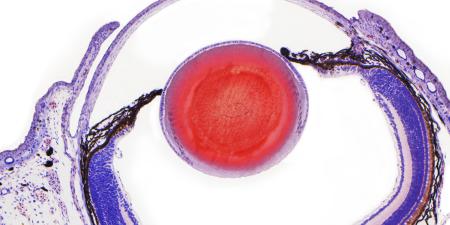Case
Mr. Crowley visited his primary care physician after experiencing several months of fever, night sweats, nonspecific back pain, and “lumps in his shoulders and chest.” After a meticulous workup, including a biopsy that revealed Reed-Sternberg cells, he was promptly referred to Dr. Randolph, an experienced and reputable oncologist. After Mr. Crowley was seated in his office, Dr. Randolph pulled up his own chair, leaned forward, and explained that Mr. Crowley had classic stage I Hodgkin lymphoma. He added that the survival rate was generally 90 percent or better with chemotherapy, which made the prognosis a good one—most patients who entered remission lived normal, healthy lives.
Dr. Randolph could see that Mr. Crowley, an active and previously healthy man in his 50s, was upset. He said he would go home to consider his options before proceeding, so Dr. Randolph scheduled an appointment for one week later to finalize the treatment course. At his return visit, it was clear Mr. Crowley had come to a decision. After taking a deep breath, he began, “Doctor, I know that you think chemotherapy is best for me, but I think I want to try a macrobiotic diet instead. Chemo will only introduce its own harmful chemicals, and that really seems like the last thing I need right now. At the very least, I want to attempt a few months of macrobiotic cleanses before I even think about chemotherapy.”
At this point Dr. Randolph began to speak more firmly: “I understand where you’re coming from—chemo is a frightening and unpleasant prospect. But without it, the risk of death rises to 95 percent. Even delaying treatment could be detrimental, resulting in rapid tumor growth, which may happen if you follow the regimen you suggest.”
Mr. Crowley shook his head. “I’m sorry, but I need a second opinion, from someone who is…more open-minded about alternative therapies.”
Dr. Randolph considered the situation. He had heard anecdotes about the benefits of macrobiotic diets but knew there was no scientific evidence that they could treat cancer successfully. He cared about patient autonomy—and Mr. Crowley was clearly a competent adult—but was he really informed enough scientifically to make a proper decision? Perhaps negotiating a treatment plan that included a macrobiotic cleanse was necessary, but was it ethical?
Commentary
Because of the widespread use of complementary and alternative medicine (CAM) in the United States and abroad, physicians in this day and age must be able to address the topic with patients [1, 2]. Let’s dissect this case vignette and think about a framework as well as an attitude and approach that would allow Dr. Randolph to help Mr. Crowley receive the best possible health care outcome under the circumstances. Provided below is a concise summary of what happened between Mr. Crowley and Dr. Randolph:
- Dr. Randolph broke the serious news about the diagnosis of lymphoma and stated a planned course of action, in response to which Mr. Crowley became upset and decided to think about alternative options;
- Mr. Crowley announced his decision to try another treatment approach before chemotherapy;
- Dr. Randolph responded by naming and acknowledging the emotion involved, expressing doubt about Mr. Crowley’s decision, and stating his concerns about increasing the risk of cancer progression and death;
- Mr. Crowley perceived Dr. Randolph’s objection to alternative therapy as close-minded and stated his intention to seek an expert opinion from a different kind of health care professional.
How could Dr. Randolph have approached Mr. Crowley’s care in a way that might have achieved a different outcome? First, he would bring to the visit the attributes of a mindful practitioner, paying attention to his own physical and mental processes with presence, humility, courage, open-mindedness, and curiosity [3]. He would choose a level of intensity in his voice and body language fitting to the visit, which in this case would demonstrate his calmness and focus. He would also be aware of an appropriate framework for the physician-patient relationship. Multiple models of the physician-patient relationship have been described and examined over the past few decades, ranging from paternalistic models at one extreme to independent-choice models on the other end of the spectrum [4, 5]. Dr. Randolph favors an enhanced-autonomy model [5] that is patient-centered and dialogue-based and features shared decision making. Such a model emphasizes the physician’s role as an expert guide who is actively and personally invested in, as well as jointly responsible for, the course of treatment that he or she and the patient plan together.
Using skills mastered for communicating serious news [6], Dr. Randolph would begin by asking Mr. Crowley about his perception of the illness. He would ask for permission to talk about the news. He might suggest that the main questions that need to be answered are [7]: “What is happening to me? What is going to happen to me? What can be done to help me?” If Mr. Crowley agrees that these are the key questions and invites answers, then Dr. Randolph would provide a straightforward explanation of the news. If there seems to be anger in response to the news, he would name the emotion and explore it further. Dr. Randolph knows that effective communication, finding common ground with the patient, and treating the patient as an individual are key elements in crafting a compassionate patient-physician relationship—a therapeutic alliance [8].
Imagine that Mr. Crowley insists on doing the macrobiotic cleanses. Dr. Randolph, maintaining the attitude and intensity that he decided on before the initial visit, would remain calm and curious. He should also employ “toughness”: the ability to maintain his attitude and approach in the face of adversity. (From his perspective, his patient’s decision falls into that category.) In an attempt to defuse his patient’s oppositional attitude, he could ask Mr. Crowley questions in a nonjudgmental tone about the basis of the decision. He could assert his credibility on this topic by defining a macrobiotic diet, discussing the role of toxins and energy imbalance in regard to cancer development and treatment, and emphasizing the role of chemotherapy and its associated risks and benefits in this disease context. Dr. Randolph’s choice of words and his nonverbal behaviors would reflect that he respects Mr. Crowley’s background and beliefs and his individual concerns and decision-making processes.
A key question to explore is what underlies the choice of the macrobiotic approach. Is it the idea of “doing everything possible” or a desire to prioritize “natural” approaches? Perhaps Mr. Crowley is driven by fear from a past experience or maybe by a family member’s beliefs or experience. Overall, thorough and respectful assessment of Mr. Crowley’s beliefs and understanding will help assess if he is open to discussion about his medical decision and, if so, how best to approach the conversation.
The belief of many patients that CAM therapies offer nontoxic and effective options is frequently based on nonscientific data. For patients without a medical background, it can be very difficult to distinguish between therapies supported by clinical research and those endorsed by anecdotal evidence or tradition. Not all patients know that most therapies advertised as cancer cures have not undergone human clinical trials, whereas there is clearly data to recommend, for example, chemotherapy for stage I Hodgkin lymphoma. Some patients find the pharmaceutical industry suspect and believe it to be overwhelmingly profit-motivated; they may not realize that other information may come from sources with similar or more direct conflicts of interest. Discussing the specific source of the information patients are using will help evaluate its worth and create a better environment for informed decision making.
This discussion also requires the physician to be, to some degree, knowledgeable about the topics involved. Dr. Randolph would do well to admit, if it were true, that he is not completely familiar with the details about macrobiotic cleanses. An empathic approach goes a long way, and the patient will be able to sense the physician’s sincere compassion. Dr. Randolph could thus honestly express his worries about the implications of delaying chemotherapy without downplaying his concern for the patient and the patient’s explicit goal of achieving cure with the fewest possible side effects. If needed, he could use a “time out” and set up an early follow-up visit to give himself some time to think through these issues carefully and, if necessary, learn more about macrobiotic diets.
Dr. Randolph might acknowledge, at some point, that he is not on the same page as Mr. Crowley and propose some way forward using negotiation skills. Dismissal of Mr. Crowley’s views could easily result in a broken relationship, leaving Mr. Crowley too uncomfortable to return for further care. Instead, respectful acknowledgement of Mr. Crowley’s views and a willingness to work with him, at least to monitor his health, will leave Mr. Crowley the option to return for further discussion and care. Depending on his level of commitment to the macrobiotic diet, a time-limited trial of 4-8 weeks would be reasonable, as long as Mr. Crowley was fully informed that this approach could allow the disease to progress and perhaps lower the chances of curing it. If, after a trial period, there were clear signs of disease progression, Mr. Crowley could then feel comfortable reconsidering Dr. Randolph’s recommendation of chemotherapy. Regardless of the patient’s eventual choice, Dr. Randolph could emphasize his desire to stay closely connected to Mr. Crowley [9] and help him in any possible way, thereby maintaining a therapeutic alliance.
A macrobiotic diet entails recommendations for certain foods and cooking methods. Unfortunately, no clinical trials have been performed to identify the risks and benefits associated with this approach. The current medical understanding of this diet is that the likelihood of any favorable impact on the course of Hodgkin lymphoma is extremely low. Referring Mr. Crowley to a colleague with additional knowledge about CAM could help satisfy the patient’s desire to explore all avenues with expert care. If such a consultant is not available, referral to a licensed dietician might be helpful.
Physicians are commonly confronted with dilemmas like the one described in this vignette. In this case, it is not clear whether Mr. Crowley reacted badly because of the news he had received or because of the way Dr. Randolph handled the encounter itself. The basis for the patient’s treatment decision appears to have been multifactorial.
Conflict between patients and physicians most often involves disagreement about the goals of care or the family’s role in decision-making processes [10]. There is very little high-quality evidence about how to approach the subject of CAM with patients, but there is a wealth of information and expert opinion from the literature in oncology about general principles of effective patient-physician communication [11]. Respecting patient autonomy sometimes entails adult patients’ making what we, in allopathic medicine, view as poor decisions—even at the risk of death [12]. Despite this, we continue to play an active role in caring for these patients. Physicians like Dr. Randolph would be well served to continue advocating for their patients’ health and unequivocally supporting competent adult patients, such as Mr. Crowley, in their right to accept or decline chemotherapy for a highly curable disease such as stage I Hodgkin lymphoma.
References
-
Sewitch MJ, Yaffe M, Maisonneuve J, Prchal J, Ciampi A. Use of complementary and alternative medicine by cancer patients at a Montreal hospital. Integr Cancer Ther. 2011 [epub].
- Yates JS, Mustian KM, Morrow GR, et al. Prevalence of complementary and alternative medicine use in cancer patients during treatment. Support Care Cancer. 2005;13(10):806-811.
- Epstein RM. Mindful practice. JAMA. 1999;282(9):833-839.
- Emanuel EJ, Emanuel LL. Four models of the physician-patient relationship. JAMA. 1992;267(16):2221-2226.
- Quill TE, Brody H. Physician recommendations and patient autonomy: finding a balance between physician power and patient choice. Ann Intern Med. 1996;125(9):763-769.
-
Back A, Arnold RM, Tulsky JA. Mastering Communication with Seriously Ill Patients: Balancing Honesty with Empathy and Hope. New York: Cambridge University Press; 2009.
- Cohen JJ. Remembering the real questions. Ann Intern Med. 1998;128(7):563-566.
-
Sanghavi DM. What makes for a compassionate patient-caregiver relationship? Jt Comm J Qual Patient Saf. 2006;32(5):283-292.
- Suchman AL, Matthews DA. What makes the patient-doctor relationship therapeutic? Exploring the connexional dimension of medical care. Ann Intern Med. 1988;108(1):125-130.
- Coyle N, Sculco L. Communication and the patient/physician relationship: A phenomenological inquiry. J Support Oncol. 2003;1(3):206-215.
- Schofield P, Diggens J, Charleson C, Marigliani R, Jefford M. Effectively discussing complementary and alternative medicine in a conventional oncology setting: communication recommendations for clinicians. Patient Educ Couns. 2010;79(2):143-151.
- Keirns CC, Goold SD. Patient-centered care and preference-sensitive decision making. JAMA. 2009;302(16):1805-1806.



